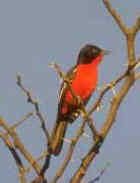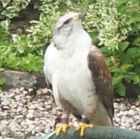Namibia Specialities

Photo copyright the
Zoo
in the Wild
..
.jpg)
Photo copyright Cliff
Buckton
..
.jpg)
Photo
copyright Lynnette Oxley
..
.jpg) Photo copyright Zoo
in the Wild
Photo copyright Zoo
in the Wild
..
.jpg)
Photo copyright Birdlife
On-Line Magazine
..
.jpg) Photo copyright Graham
Cooke
..
Photo copyright Graham
Cooke
..
 Photo copyright Tina
MacDonald
..
Photo copyright Tina
MacDonald
..
.jpg) Photo copyright Clement
Francis and Vijaykumar Thondaman
..
Photo copyright Clement
Francis and Vijaykumar Thondaman
..
.jpg) Photo copyright Callan
Cohen
..
Photo copyright Callan
Cohen
..
.jpg) Photo copyright Eric
Van Poppel
..
Photo copyright Eric
Van Poppel
..
.jpg) Photo copyright Birdlife
On-Line Magazine
Photo copyright Birdlife
On-Line Magazine
..
 Photo copyright Nigel
Blake
Photo copyright Nigel
Blake
|
 ....Namibia
Birding Sites - includes detailed information on: ....Namibia
Birding Sites - includes detailed information on:
-
Aus
-
Katima Mulilo
-
Kwando
-
Popa Falls
-
Cunene
-
Etosha
-
Spitzkoppe
-
Walvis Bay
-
Waterberg
-
Windhoek
...
 ....Namibia
- A Birder's Paradise - from the National Museum of Namibia. ....Namibia
- A Birder's Paradise - from the National Museum of Namibia.
Namibia, with its wide variety
of habitats, ranging from extreme desert to thorntree savanna to subtropical
riverine and swamp habitats, understandably has a lot to offer in the way
of birds, and, with a well developed network of roads, most of the region
is easily accessible. Namibia's political boundaries straddle the greater
part of this arid region, which extends into the northern Cape province
of South Africa, and the southwestern corner of Angola. Of some 680, mostly
African, species of birds one can see in Namibia, nearly 100 species are
unique to this arid region.
...
 ....Namibia's
Etosha National Park - The Place of
Dry Water - ....Namibia's
Etosha National Park - The Place of
Dry Water -
Ostrichesshare
the grasslands with the hoofed animals. The huge kori bustard, weighing
over 30 pounds, lives mostly on the ground as well, seldom summoning the
strength to propel its enormous mass into flight. Yellow-billed hornbills
are common and over 300 more birds have been spotted. In years of good
rain, the salt pan becomes a temporary lagoon. Flamingos and white pelicans
wing in to breed.
...
 ....Namibia
Birding - Trek into Africa - From desert dunes to flamingos in ....Namibia
Birding - Trek into Africa - From desert dunes to flamingos in
the
ocean, Namibia is an interesting and unusual country in which to bird,
an example of unspoilt nature. It is an country of extremes, from the largest
national park in the world to some of the tallest sand dunes, from penguins
to flamingos.
...
 ....The
Ephemeral Wetlands of Central Northern Namibia - The ....The
Ephemeral Wetlands of Central Northern Namibia - The
ephemeral wetland
system of central northern Namibia consists of the Etosha Pan, Lake Oponono
and the Cuvelai inland delta/drainage. This is by far the largest wetland
system in Namibia, covering some 30,000km2.
...
 ....Namib-Naukluft
Park - covering over 49 768 km is not only the ....Namib-Naukluft
Park - covering over 49 768 km is not only the
largest nature
conservation area in Namibia, but it is rated as the fourth largest in
the world, as well as being the most unusual. Landscapes range from
an impressive mountain massif to desert plains and high dunes, from deep
gorges to an estuarine lagoon.
...
 ....Namibia's
Caprivi Strip - by Christopher Hines, from Bulletin
of the ....Namibia's
Caprivi Strip - by Christopher Hines, from Bulletin
of the
African Bird Club, volume
3.2, September 1996. With more than 450 species recorded in this small
area and a reasonably good infrastructure, the Caprivi Strip is one of
southern Africa's top birding spots.
...
 ....A
Tour around Namibia - Africa's Undiscovered Jewel - By Bert ....A
Tour around Namibia - Africa's Undiscovered Jewel - By Bert
du Plessis, Fish Eagle Safaris.
What are the ingredients for the 'perfect' African safari destination?
Lot's of animals, few people, good roads, great weather and reasonable
prices? How about political stability, a low crime rate and a currency
which is at an all-time low against the US Dollar? Add to all that a low
incidence of malaria, fascinating cultural experiences, interesting cuisine,
and a long list of things to see and do other than just viewing wildlife.
Namibia is surely the only African country which boasts all of these, and
more.
...
 ....How
to Survive Namibia - not a lot about birds, but a great deal ....How
to Survive Namibia - not a lot about birds, but a great deal
(both instructive and humerous)
about travelling in Namibia on your own.
....
 ....Birds
of Southern Africa - With so many different habitats in Southern ....Birds
of Southern Africa - With so many different habitats in Southern
Africa,
the bird life is diverse with over 950 species. There are photos, maps,
slide shows, satellite images, and recorded bird songs.
....
 ....Trip
Report: Zambia, Namibia & Botswana - The Miombo, Mavunda ....Trip
Report: Zambia, Namibia & Botswana - The Miombo, Mavunda
and
Mwinilunga and living deserts of Namibia. A Tropical
Birding Trip Report. 22 October – 12 November 2003. Zambia is curiously
underestimated as a birding destination despite a long list of selling
points: it has a high diversity of habitats, many localised species, stable
politics and reasonable infrastructure. This trip delivered a huge number
of birds, and we managed 505 species (including heards) in 20 days of birding.
...
 ....Trip
Report: Namibia - “The Living Desert” with Kunene/Caprivi ....Trip
Report: Namibia - “The Living Desert” with Kunene/Caprivi
extension.
19 December 2002 - 8 January 2003. Tour Leader: Richard White (a Tropical
Birding Trip). Although this trip was designed with a fair bit of mammal-watching
and relaxation in mind, we managed to see a very respectable 391 bird species
on tour. Amongst these were all of the Namib endemics, all of the Okavango
Swamps specials as well as a variety of other seldom-seen birds such as
White-backed Night Heron, Lesser-spotted Eagle, Wattled Crane, Bradfield’s
Hornbill and Rufous-tailed Palm-Thrush. Other highlights included eight
species of owl, seven species of bee-eater and the recently elevated Orange
River White-eye, formerly a subspecies of Cape White-eye. In amongst this
were Lions, Leopards, Elephants and hoards of other game, making this,
as usual, the quintessential African birding safari.
...
 ....Birdwatching
in Namibia and South Africa Sep.-Oct. 1990, by ....Birdwatching
in Namibia and South Africa Sep.-Oct. 1990, by
Erik Mølgaard, Jesper
Meedom & Torben Pallesen.(NOTE: this is a downloadable report in WORD
format from the Danish Ornithological
Society´s website). The main purpose of the journey was to observe
birds and animals and experience the magnificent and varied nature of Southern
Africa. The journey was definitely a succes, as we registered a total of
583 species of birds and 61 species of mammals. The weather was very hot
and dry in central Namibia, more humid with a few showers in Caprivi, nice
and fresh springtime with some wind in the Cape, cold and sunny in the
Drakensberg, humid with a few showers in Natal and hot and dry in Transvaal.
In Namibia it was the end of the dry season, in Natal and Kruger the wet
season should just have started by the time of our visit, but the rains
had failed in Kruger. Birdwatching was never restricted by weather or weather
conditions.
...
 ....Trip
Report: Namibia - September 14 - 30, 2000 - Although we had ....Trip
Report: Namibia - September 14 - 30, 2000 - Although we had
done
our homework beforehand, Namibia still far exceeded our expectations in
almost all respects but especially the high standards of infrastructure
and service, the vast open uninhabited space, and the freedom to explore
by car even in Etosha where there is a lot of big game.This was a very
enjoyable holiday with a trip list of 209 species and 123 lifers. It would
be nice to return again during or just after the rainy season when the
vegetation is green and there would be more migrants and birds in breeding
plumage around.
...
 ....Trip
Report: Botswana, Namibia and Victoria Falls "Deserts, ....Trip
Report: Botswana, Namibia and Victoria Falls "Deserts,
Wetlands
and Wilderness" - September 2001, by Ian Broadbent. This was the first
trip to Africa for my wife and I, and it proved to be an excellent introduction
to the wildlife and culture of the region. This was not intended to be
an all out birding holiday, and so some key sites were not visited and
a few of the Namibian endemics missed, but the tour still facilitated a
lot of great birding and game viewing and we had a wonderful time. We ended
up with a bird list of 318 species and a mammal list of 40, both of which
exceeded all expectations considerably.
...
 ....Trip
Report: Northern Botswana and the Caprivi Strip - July, 1998. By ....Trip
Report: Northern Botswana and the Caprivi Strip - July, 1998. By
Andrew
Hester. In July of this year (1998) our family ventured up north to the
Northern parts of Botswana and Caprivi. The Caprivi is a fascinating area.
It provides drainage for most of the south-eastern side of Angola, and
three large rivers effectively drain Angola and move through the Caprivi.
They are the Kavango which ends up as the Okavango Swamps, and disappears
into the Kalahari desert. The Kwando, which flows into the Linyanti Swamp
system eventually to become the Chobe and lastly the Zambezi, which flows
eastwards
towards the Indian Ocean. With its myriad's of rivers, channels and waterways
the area provides a home for many water and swamp birds as well as birds
associated with forest and woodland adjacent to the waterways.
...
 ....Trip
Report: Namibia, Botswana & Zimbabwe - September 27 - ....Trip
Report: Namibia, Botswana & Zimbabwe - September 27 -
October
24, 1998 by David Kelly. This is a report on my visit to Southern Africa
this autumn. This was my third visit to the region, I visited Zimbabwe
in 1993 and Cape
Town/Zimbabwe in 1996. On this trip the first part was an overland
tour of Namibia with Kumuka, this was on a MAN truck and there were twelve
passengers. This meant that birding was done where we stopped and that
some of the classic Namibian sites and endemics were missed. I did, however,
thoroughly enjoy the trip and was very happy with the birds (and mammals)
I could see. The overland ended with two days in Chobe NP in Botswana and
two days at Victoria Falls.
...
 ....Trip
Report: Namibia - October-November 1996. By Dave Hanford. ....Trip
Report: Namibia - October-November 1996. By Dave Hanford.
We saw 264 species in Namibia,
and we travelled to Epupa Fal1s and Katima Mulilo in the North, to Fish
River Canyon in the South, and lots in between.
...
 ....Namibia
Trip Reports - you can find more Namibia trip reports on John ....Namibia
Trip Reports - you can find more Namibia trip reports on John
Girdley's
BirdTours website.
...
Factoids taken from Where
to Watch Birds in Africa - by Nigel Wheatley.
|

.jpg)
.jpg)
.jpg)
.jpg)
.jpg)

.jpg)
.jpg)
.jpg)
.jpg)

.jpg)
.jpg)